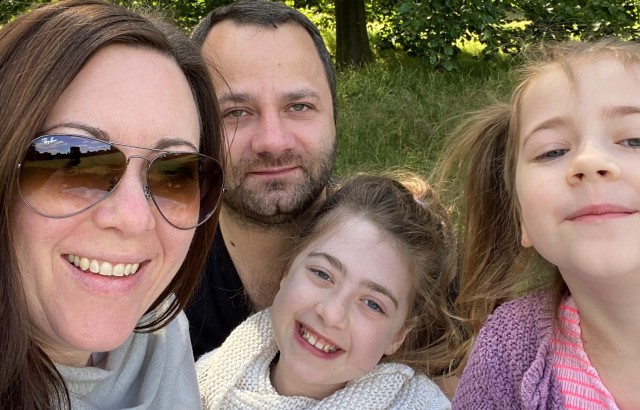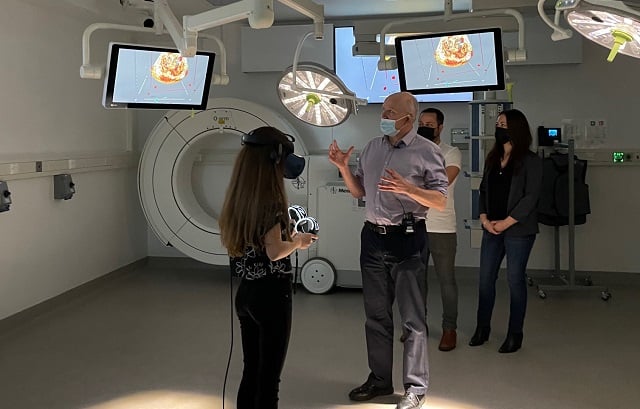

Rosie was diagnosed with congenital heart disease before she was born. Her parents think that new Virtual Reality (VR) technology, being developed with funding from us, could help improve the experiences of families like theirs.

Darren and Gemma Nesbitt know just how traumatic it can be when your child needs life saving surgery. Their daughter Rosie was just ten days old when she underwent open heart surgery at Evelina London Children’s Hospital to repair problems with some of her heart’s major blood vessels.
Gemma said: “You’re given so many different pieces of information when your child is diagnosed with a heart condition, but I really struggled to understand what the problems in Rosie’s heart meant for her. Being able to see her heart using this technology would have been a huge help for me to understand more about her complex heart structure.”
Rosie, now 10, had a further procedure at the age of nine to close a hole in the wall between her ventricles and repair a valve in her heart. Her family came to see some new virtual reality technology being developed to help surgeons plan complicated heart operations like Rosie's.
“I thought nothing could ever be worse than that first surgery, but Rosie’s second surgery was hell,” said Gemma. “Anything that can give surgeons more confidence going into an operation, or that could shorten the time spent operating, would be a major help,” added Darren. “This technology could bring real comfort and reassurance to families like ours.”
Rosie is already a big fan of VR. What does she think about being able to see her heart like this? Her eyes light up as a big smile spreads across her face - “it's so cool.”

Professor John Simpson, Professor of Paediatric and Fetal Cardiology at Evelina London and King’s College London, is leading the team developing the VR technology. He said:
“Procedures to repair the heart’s anatomy can be complex, and surgeons don’t like surprises. Our technology will allow surgeons to plan and practice these procedures, and we’re currently applying for approval for it to be used in this way.
“We think that this technology could also be used outside of congenital heart disease surgeries, to plan any procedure which aims to repair a structural problem within the heart, such as valve surgery in an adult patient.”
We have launched a new campaign, calling for the public’s support to power science that could lead to new treatments and cures for all heart and circulatory diseases.
Help us power life saving discoveries


